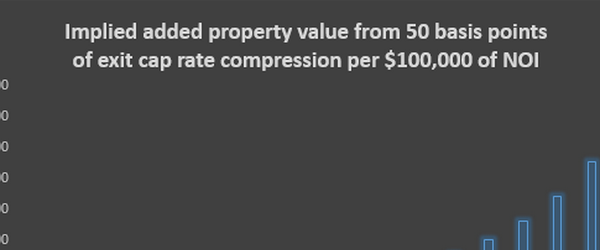Investment value calculation is required when a property is evaluated for investment purposes. This value will vary for different investors depending on their investment criteria and especially return requirements and risk tolerance.
The investment value of a property refers to the value of anticipated future benefits that the investor expects to receive by owning the property, given his/her time preference for money, his/her risk tolerance, and the uncertainty associated with expected cash flows. Thus, the investment value calculation requires the use of particular assumptions/estimates regarding costs, revenues, holding period, re-sale price, tax obligations and many other factors that may affect the owner’s benefits.
Investment value may be different from market value. The market value is defined as the most probable selling price for a property given the demand and supply conditions prevailing in the market within which the property is competing for buyers, under all conditions that required for a fair sale with no undue influences. The market value assumes that the buyer is a prudent and well informed investor, with average return requirements as reflected in valid market transactions that have taken place during the year of analysis.
Factors Influencing Investment Value Calculation
Investors are interested in both the amount of benefits received and their timing. In general, benefits received later worth to an investor less than benefits received earlier. The trade off will depend on the time preferences of each investor.
Another important factor that enters investment value calculation indirectly is uncertainty. Investors tend to attach greater value to cash flows with higher degree of certainty than potential cash flows with lesser degree of certainty. For example, the expected rental income flows from space already leased with a ten-year contract to a credit-worthy company have more value to an investor than potential rental income from a property that is currently vacant and has the potential of producing the same income when leased, as the latter involves greater uncertainty in terms of its realization. The degree to which the value of future cash flows is discounted due to uncertainty will depend on each investors risk tolerance. Obviously, investors with greater risk tolerance will discount uncertainty of future cash flows less than investors with smaller risk tolerance. This implies, that risk tolerant investors will use a lower discount rate when discounting future cash flows, which should result to a higher present value, while risk-averse investors will use a higher discount rate, which should result to a lower present value of future cash flows.
An important factor that affects the investment value calculation is the structure and the debt-equity mix involved in acquiring and developing the property. Given that property transactions are capital intensive (that is, they require large amounts of capital) it is typical to use borrowed funds when acquiring a property. Furthermore and foremost, borrowing is used by property investors, because under certain requirements, it can increase considerably their return on equity. Thus, often a property’s market value to a potential investor is calculated by capitalizing the property’s expected net operating income (NOI) by the weighted average cost of debt and equity capital.
Steps of Investment Value Calculation
The investment value of a property can be calculated as the sum of the present value of the equity position and the present value of the debt position associated with its acquisition and/or development. According to Greer and Farrell (1992), the present value of the equity position is calculated as the present value of anticipated after-tax cash flows over the holding period including the anticipated sales proceeds from the disposal of the property at the end of the holding period.
The after-tax cash flows over the holding period are calculated by subtracting from the net operating income (NOI) the annual debt service and then the income tax due on those cash flows.
In estimating the present value of equity position it is necessary to make a number of assumptions regarding, future property income and its timing, operating expenses, equity amount, loan rate, re-sale price, income tax obligations, market capitalization rates at the end of the holding period, and investor required return or discount rates at the time of analysis.
The present value of the debt position is calculated as the present value of scheduled mortgage payments over the investment’s holding period.
Based on the discussion above, the formula for investment value calculation for a property is the following:
PT = PE + PD
where
PE = present value of equity position
PD = present value of debt position
PT = present value of total investment position
Furthermore the formula for present value of equity (PE) is:
PE = CF1/(1+r) + CF2/(1+r)2+ …….+CFn/(1+r) n + SPn/(1+r) n
Where
CFt = after-tax cash flows to the equity investor (after debt service and tax payments) in year t where t=1,2,….n
r = discount rate, which typically represents the required rate of return by investors in the marketplace at the time of analysis
SPn = sales price at the end of the investment’s holding period




































Comments